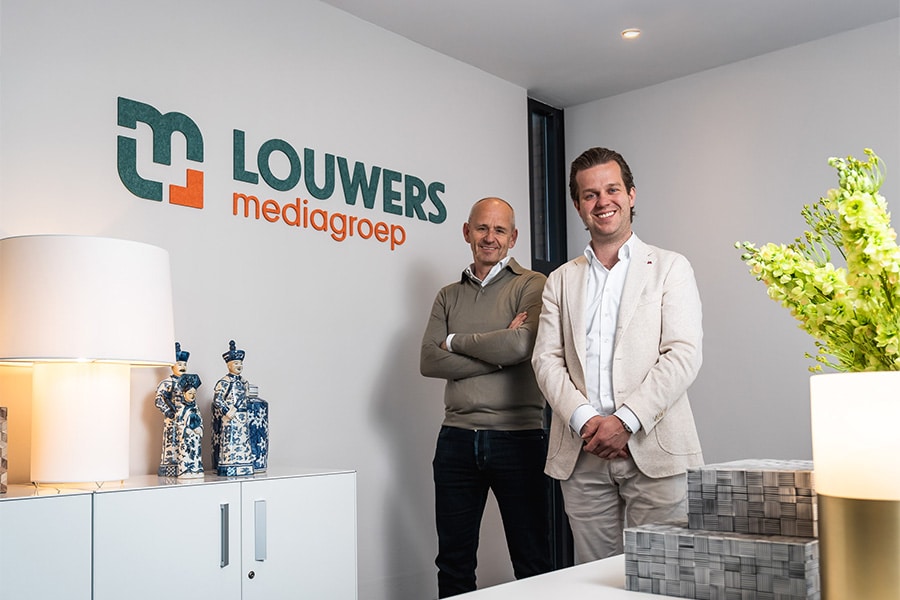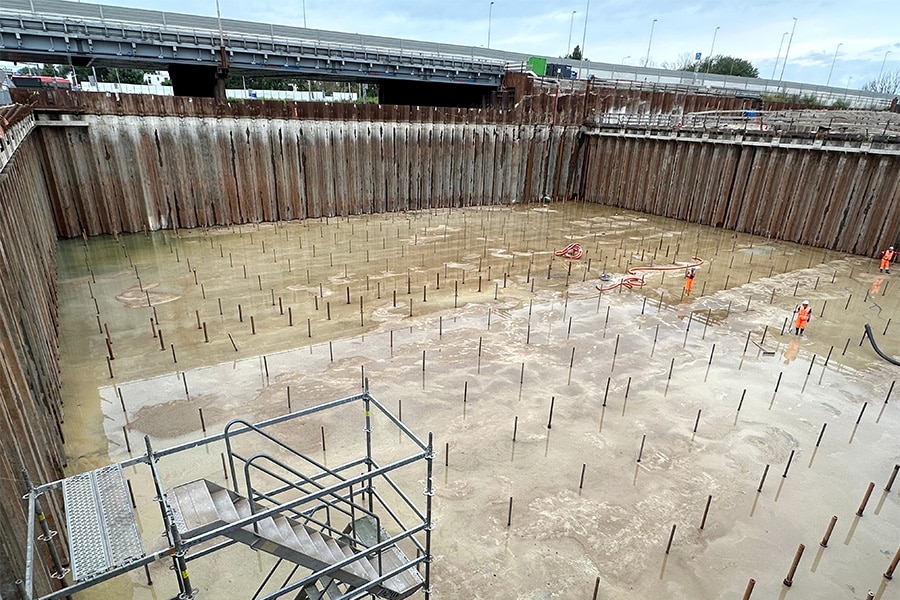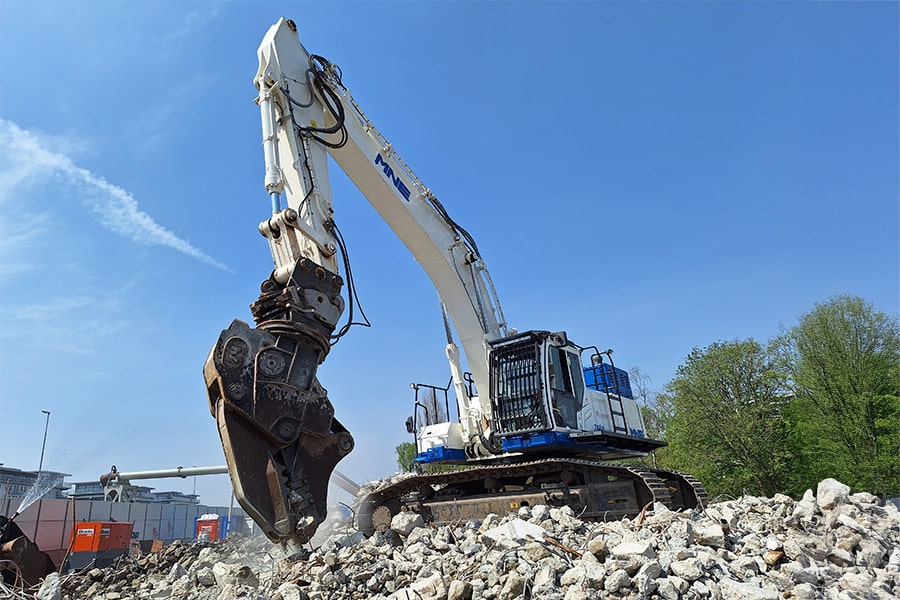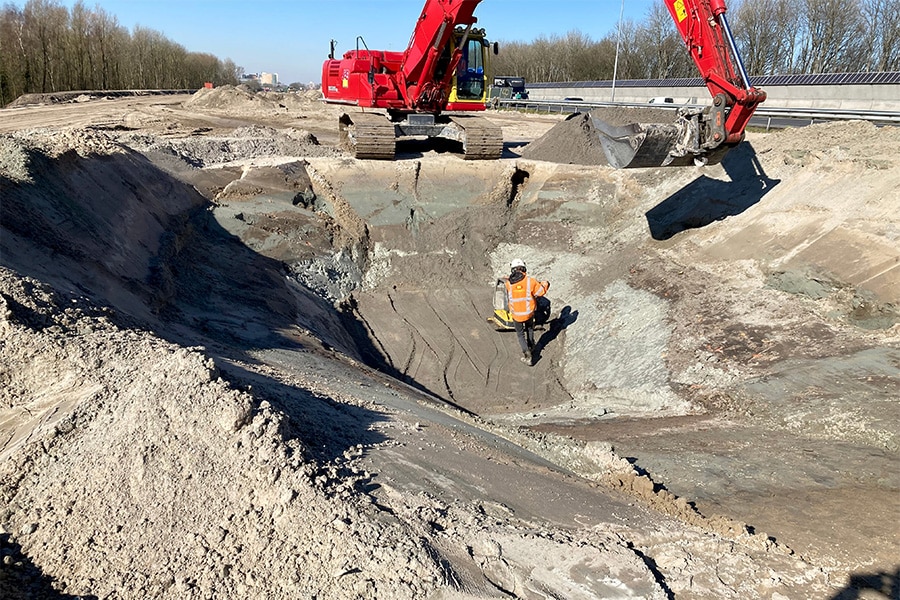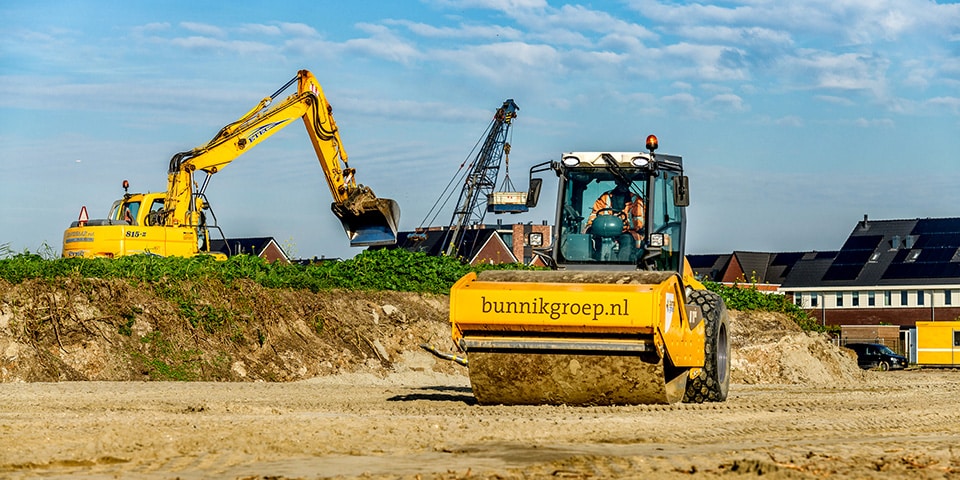
Soil subsidence serious problem in low moorland areas
For years, the Dutch low moorland areas have suffered from severe flooding due to subsidence. After a heavy rainfall, streets flood and houses fill up with water. As a specialist in the soft soil area, Bunnik Group is making an important contribution to making neighborhoods and villages in the low moorland area climate-proof. We take a look with Luuk Tamminga at a 'slack soil' restoration project in Kockengen and in De Kanis.
Climate adaptation is a hot issue in the Dutch low moorland areas, according to Tamminga. "The combination of increasing intensity of showers and subsidence of the soil means that streets in these areas are increasingly flooded with all the consequences this entails. It is a serious problem. The municipalities in this area have united to form the Platform Slack Soil to combat subsidence. In the former municipality of Reeuwijk, we were already 'house contractors' before the redivision to Bodegraven - Reeuwijk, when it comes to slack soil restoration. Reeuwijk is in the top ten in terms of sagging soils, the soil here is really very bad."
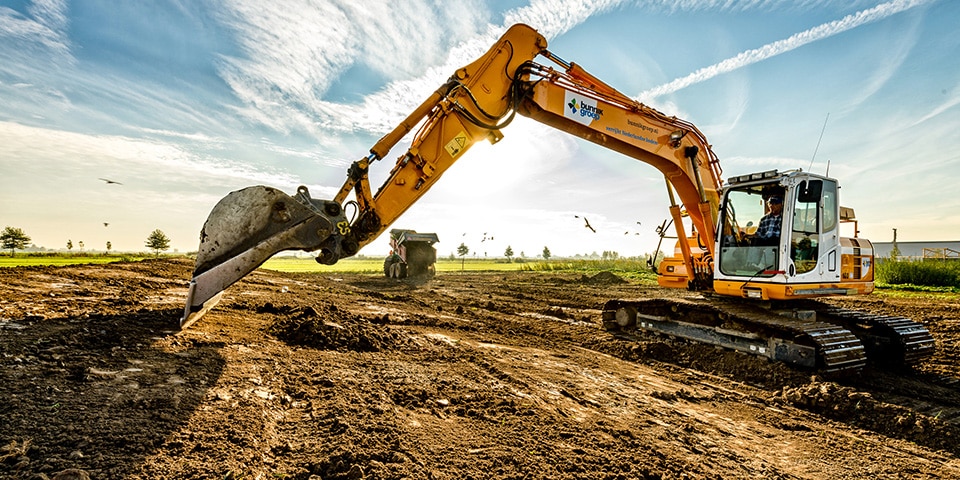
As a specialist in the soft soil area, Bunnik Group is making an important contribution to making neighborhoods and villages in the low moorland area climate proof.
Unique features
Bunnik Group itself is located in the Green Heart, in the middle of the slacklands. "Ever since our founding, over fifty years ago, we have focused on public space management," Tamminga continues. "We operate in four disciplines, noting that there is increasing attention from the market for sustainable sagging soil restoration. Each village, each neighborhood, each street has its unique characteristics and requires an individual approach. For example, our approach in Kockengen is completely different from that in De Kanis, a village center in the municipality of Woerden." Kockengen, also a nearby core but belonging to the municipality of Stichtse Vecht, is being fully climate-proofed over ten years. The project has been underway since 2014 and is being tackled in phases (ten phases). Of the five phases already awarded, Bunnik Group commissioned four. One of these phases involved 125 homes with a contract sum of 3 million euros. In comparison, the project in De Kanis also touches 125 homes, but has a contract sum of more than 10 million euros.
Sustainable methodologies
De Kanis suffers from severe subsidence due to the weak peat soil. Tamminga: "The public space has subsided by more than 60 centimeters in some places. We use a unique method here in which a subsidence-free, underpinned concrete construction is realized under the streets. On top of this we apply a bed of sand for the utilities on which the public space is constructed. This construction may have a high initial investment, but it guarantees a life span of one hundred years. In Kockengen we are also replacing the existing foundation, including the tar asphalt, in this case with lightweight foundation material. The utilities will then be placed on top of this and the paving will be restored. We also provide the elevation of the public green space and the elevation of residents' gardens."
Bunnik Group has all the knowledge and expertise to handle soil restoration projects in low moorland areas completely in-house from A to Z. "We are regularly asked to carry out the work in a construction team. But we also see that these assignments are increasingly cast in a UAV-gc contract form. As a specialist in the soft soil area, we are equipped for this like no other," Tamminga concludes.
